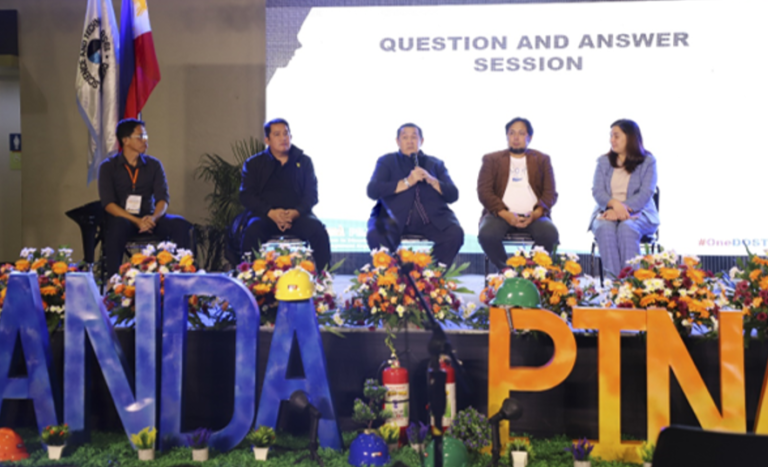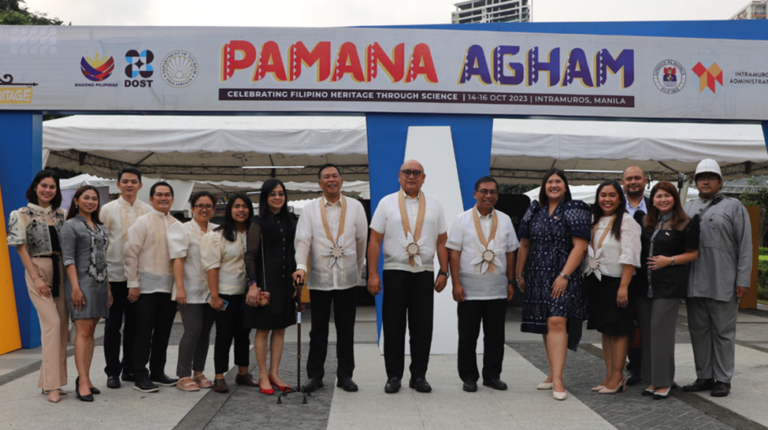DOST and the Academe: A Symbiosis for the Future

Government plays an essential role in fostering a more technology-equipped and innovation-driven country through research and development (R&D). Aside from funding assistance, it is also important to support and recognize the salient contribution of science and technology, both from a local and national level of perspective. One way to achieve advanced outcomes of collaborative research efforts is to intensify the relationship of both the government and academic research organizations.
Upholding its mandate and profound commitment, the Department of Science and Technology-National Capital Region, known to be the S&T arm of DOST in Metro Manila, has created a wide range of partnerships with several public and private academic institutions in the Region.
Academe at the Forefront: CDM Drives Science and Engineering in the South Metro
The academe serves as one of the catalysts of change towards attaining a socially and economically developed nation, as new discoveries and inventions of young scientists and researchers unfold from time to time.
One of DOST-NCR’s most active and potential Higher Education Institution (HEI) partners is the Colegio de Muntinlupa (CDM). Colegio de Muntinlupa, dubbed as the “Home of Future Engineers and Architects,” is one of the premiere institutions in the Southern part of Metro Manila. It offers five (5) engineering programs which include Civil Engineering, Computer Engineering, Electrical Engineering, Electronics Engineering, and Mechanical Engineering. In 2018, the DOST-NCR began to establish a partnership with the CDM through a collaboration on the Annual Robotics Fair and Exhibits. This yearly initiative eyes to unleash the students’ creative minds and innovative ideas through Robotics Competition, Science Quest, Mobile App Development, Virtual exhibit, and Career Pathing Webinar.
Meanwhile, current challenges and natural uncertainties experienced by the country call for more actions. The DOST-NCR provided to be unstoppable driving collaborative efforts further with the CDM. The DOST-NCR, under its Regional-Grants-In-Aid Program, funded the establishment of CDM’s Equipment Design and Prototyping Facility (EDPF) which strengthens CDM’s engineering efforts in 2021.
Serving the Industry: DOST-NCR-CDM EDPF Opens Up to MSMEs
The DOST-NCR funded EDPF was designed to house its own advanced fabrication technologies for the conduct of research and development (R&D) activities of the CDM staff and students, including various stakeholders such as Micro, Small and Medium Enterprises (MSMEs), industry partners, local government units, and other academic organizations. Moreover, it serves as a shared service R&D and prototyping facility for the academe, communities, and industries in Muntinlupa and neighboring areas.
For its pilot study, the EDPF will focus on the development of 3D Printing Pellets and Flakes from recycled plastics, and production of small-interlocking composite components such as brick or “lego”-like pieces.
The EDPF will be a part of a Science, Technology, and Innovation Gateway which will serve the MSMEs in their prototyping and design needs.
DOST-NCR Channels Technologies from Labs to the Ground through STI Gateway
As the National Capital Region proves to be evolving through time, the DOST-NCR’s perseverance in bringing forth science and technology closer to the grounds has become more fervent as the Muntinlupa City allocated a total of 700.45 square meters of land area for the establishment of Science and Technology Innovation (STI) Gateway.
Recognizing more S&T engagements along the way, the STI Gateway will channel technologies from research and development institutes (RDIs) including those in the DOST Complex in Taguig, as well as academic institutions in the South, to intended beneficiaries such as the MSMEs and communities. The STI Gateway will include the City Government of Muntinlupa, and Local Universities and Colleges (LUCs) in the city including the CDM, Pamantasan ng Lungsod ng Muntinlupa (PLMun), and other institutions such as Muntinlupa City Technical Institute (MCTI).
Likewise, the STI Gateway will include a hub where experts or consultants, researchers, inventors, innovators, and students can conceptualize, discuss, and build S&T-based solutions to emerging issues in the Region through R&D on emerging sectors.
These are just some of the major S&T-based projects between the DOST-NCR and the Colegio de Muntinlupa as one of its partner academes. This synergy of the government (DOST-NCR), academe (CDM), and private industry sector players exemplifies the triple-helix model of innovation, where all parties perform specified roles and contributions towards a common goal of creating better communities and improving the lives of the Filipino people and the generations yet to come.
By: Shaira Rapisora, SCCU





